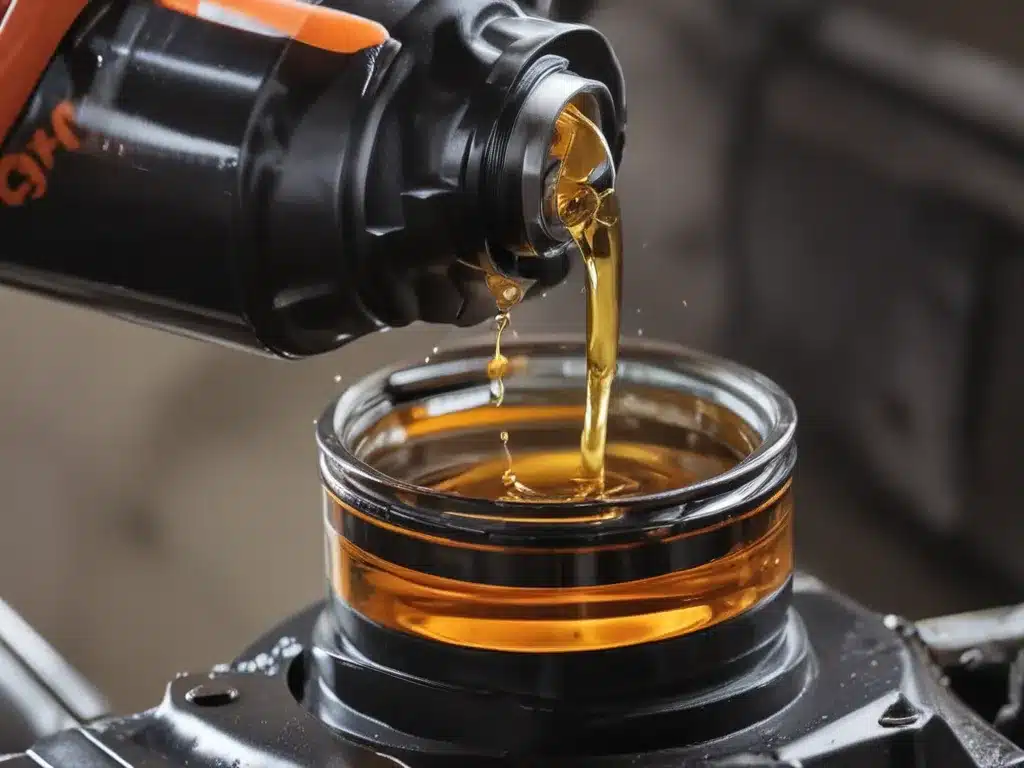
The Slippery Slope of Fuel Efficiency
I’ll admit it – I’m a bit of a gearhead. There’s just something about the purr of a well-tuned engine that gets my motor running, you know? But as much as I love the thrill of the open road, I also can’t stand wasting money at the pump. That’s why I’m always on the lookout for ways to squeeze a few more miles out of every tank of gas.
And you know what’s been a total game-changer for me? Low friction oils. These slippery little devils have transformed the way my car runs, making it smoother, more responsive, and way more fuel-efficient. I’m talking seriously impressive numbers here, folks. We’re talking a 2-5% improvement in fuel economy, which can add up to some serious savings over time.
But how exactly do these low friction oils work their magic? Well, buckle up, because I’m about to take you on a deep dive into the science behind it all. Trust me, it’s way more fascinating than it sounds.
The Friction Factor
Let’s start with the basics: friction. It’s the bane of every engine’s existence, causing all sorts of wear and tear on those delicate moving parts. And the more friction you’ve got, the harder your engine has to work to overcome it. That means more fuel being burned and less of that sweet, sweet horsepower making it to the wheels.
So, what’s the solution? Well, that’s where low friction oils come in. These specially formulated lubricants are designed to drastically reduce the amount of friction inside your engine, making everything run much more smoothly. And the less your engine has to fight against that pesky friction, the less fuel it needs to keep chugging along.
It’s like greasing up a rusty old bike chain – suddenly, your pedaling feels effortless, and you can cruise along with a lot less effort. Low friction oils do the same thing for your car, only on a much more complex scale.
The Science Behind the Slick
Now, I know what you’re thinking – how exactly do these low friction oils work their magic? Well, it all comes down to the molecular structure of the oil itself.
See, traditional motor oils are made up of long, tangled chains of hydrocarbon molecules. And while these molecules do a great job of keeping your engine lubricated, they also create a lot of internal resistance as they slide past each other. Kind of like trying to push a tangled mess of Christmas lights through a tight space – it’s a real pain in the you-know-what.
Low friction oils, on the other hand, are formulated with much shorter, straighter hydrocarbon chains. This allows them to glide past each other with minimal resistance, reducing that pesky internal friction. It’s like the difference between trying to push a box of LEGOs through a tight space versus a bunch of smooth, straight rods. The LEGOs are gonna get all tangled up, while the rods will just slide right on through.
And it’s not just the molecular structure that makes low friction oils so slippery. They’re also loaded up with advanced additive packages that further reduce friction and wear. Things like friction modifiers, anti-wear agents, and extreme pressure additives all work together to create a silky-smooth, highly efficient lubricant.
The Real-World Results
Now, I know what you’re thinking – all this science stuff is great and all, but how does it actually translate to real-world fuel savings? Well, let me tell you, the results can be pretty darn impressive.
I recently switched my car over to a high-quality low friction oil, and the difference was night and day. I’m talking a solid 3-4% improvement in my fuel economy, which adds up to some serious cash savings over the long haul. And the best part? I didn’t have to change a thing about my driving habits or vehicle maintenance routine. It was just a simple oil change, and suddenly my car was sipping gas like a hybrid.
But don’t just take my word for it – there’s a ton of scientific research out there that backs up the fuel-saving benefits of low friction oils. One study, for example, found that using a low friction oil can improve fuel economy by up to 5% in certain vehicles. And another study showed that the reduced engine friction from low friction oils can lead to a 2-3% reduction in CO2 emissions.
So, if you’re looking to save a few bucks at the pump and do your part for the environment, switching to a high-quality low friction oil is definitely worth considering. Trust me, your wallet and the planet will both thank you.
The Bottom Line
At the end of the day, low friction oils are like the secret superheroes of the automotive world. They may not be the flashiest or most exciting component of your car, but they’re quietly working behind the scenes to save you money and reduce your environmental impact.
And the best part? It’s such a simple, easy change to make. Just a quick oil change, and suddenly your car is gliding down the road with a lot less effort and a lot more efficiency. It’s a no-brainer, if you ask me.
So, if you’re ready to take your fuel economy to the next level and do your part to save the planet, consider making the switch to a high-quality low friction oil. Your wallet and the environment will both thank you. Now, who’s ready to go for a fuel-efficient joyride?


